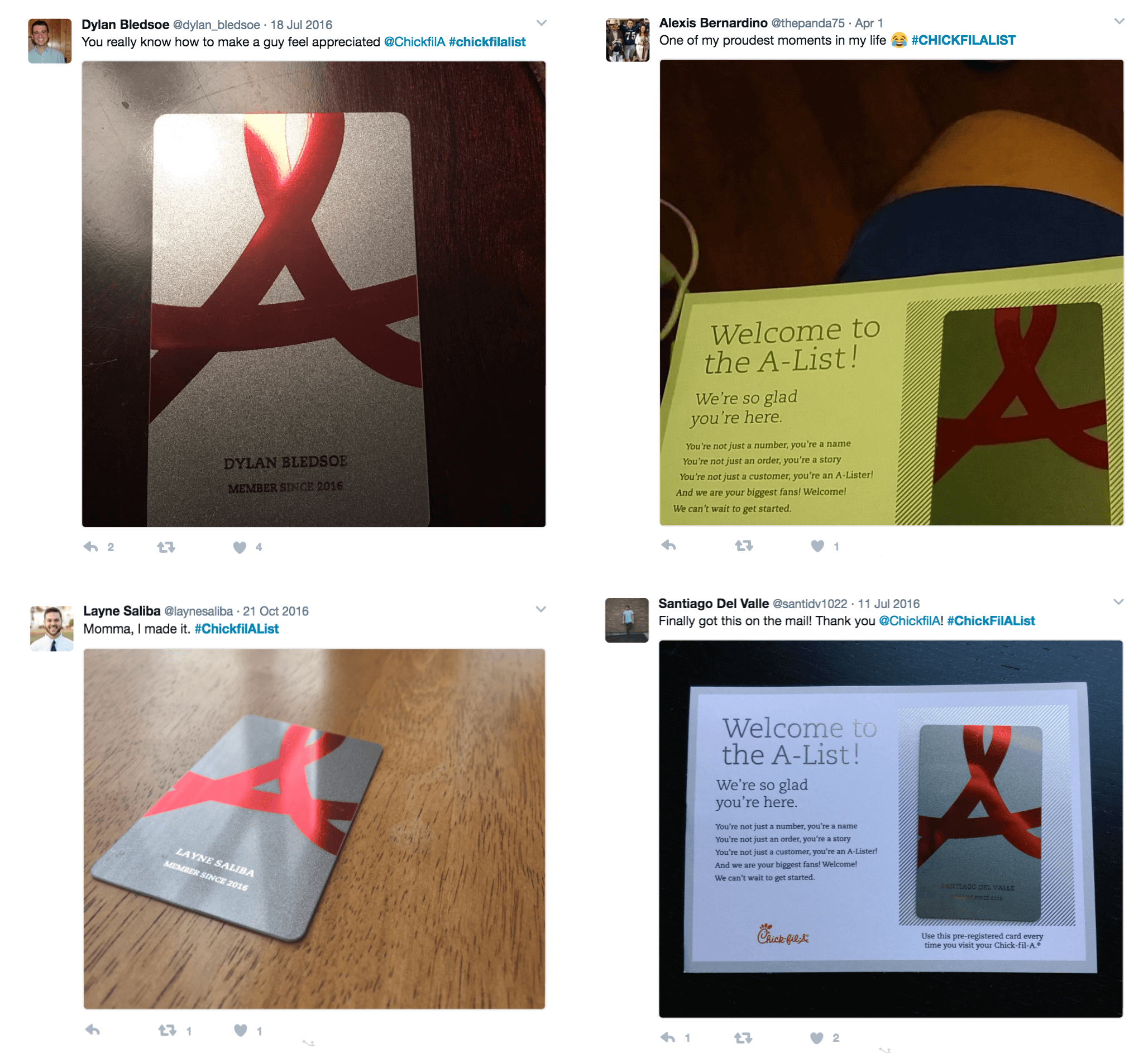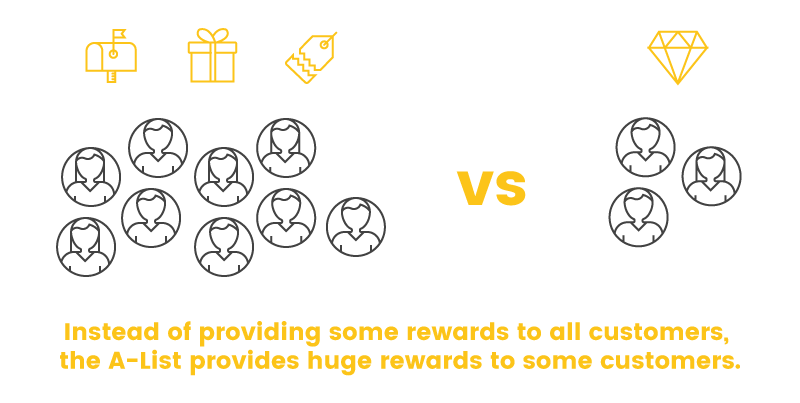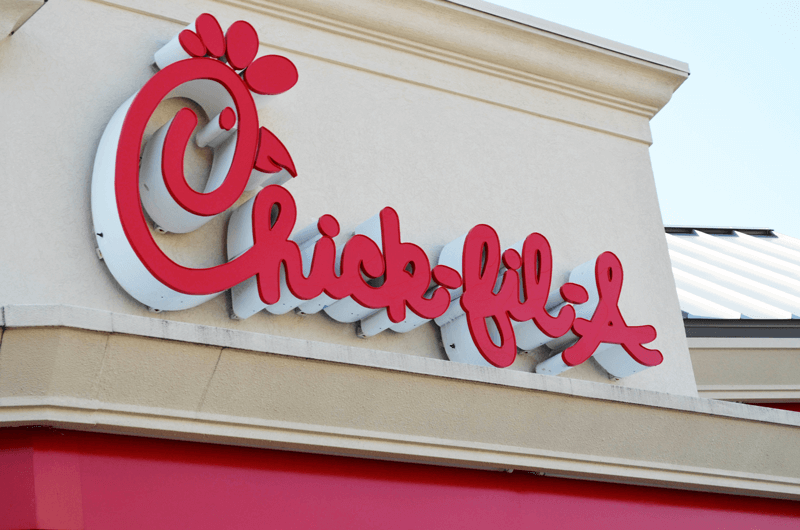It’s becoming harder and harder to imagine that marketing strategies like rewards programs were once considered a novelty in the marketplace. With the undeniable success of contemporary rewards programs, the conversation has turned from if brands should invest in a rewards program to how to optimize their program’s performance.
That being said, from time to time we stumble on a program that executes rewards so uniquely that they bring a touch of novelty to the art of rewarding customers. These unique programs spark conversations around best practices and emerging trends, and Chick-Fil-A’s “A-List” program does just that.

To call the A-List Loyalty program exclusive would be a gross understatement. Chick-Fil-A has built an elite community of chicken enthusiasts around the invite-only A-List program. The program is so secretive that many customers don’t even know it exists – a stark contrast to successfully mass marketed programs like My Starbucks Rewards and Sephora’s VIB Program.
Chick-Fil-A has received both praise and confusion for its execution of the A-List, so it can be difficult to sort out the net impact of an extremely elite program like this one. The truth is, it’s not an easy answer. There are very real pros and cons to a hyper-exclusive program and we’re here to discuss them.
The Elite Elements of Exclusive Rewards
1. Exclusive Rewards Motivate Customers
It’s no secret that humans find elite status appealing. There’s something irresistible about being one of the best and we often crave the feeling that comes from being “in the know”. That “something” we crave is more universally described as social status and its motivating effect on customers has been studied time and time again (sometimes by us).
Chick Fil-A’s A-List was made to satisfy the human need for status throughout their reward program. From the fact that program membership is invite only to the copy on their explainer page, this program is designed to fuel the elitist nature of today’s customers.

In fact, the very first statement on the A-List explainer page is a warm welcome to their “Best and most loyal customers”, assuring them that they are “one in a million and second to none.” This emphasis on status has a uniquely motivating effect on their customers both before and after they join the program.
First, customers are encouraged to join the program to achieve the elevated status we all desire so much. The program promises exclusive rewards like member-only events and insider content – all of which are appealing reasons to try and land a spot on the VIP list.

The motivating aspect of the program doesn’t stop once a customer becomes a member of the A-List, if anything it gets even stronger. It’s much like how children can once again fall in love with a previously-forgotten toy when they see a sibling or friend start playing with it.

The principle at work here is simple: seeing others desire something that we have makes us place higher value on it. By restricting access to the A-List, Chick-Fil-A is able to keep demand for program membership high among non-members while simultaneously keeping the program valuable for existing members. When it comes to motivation, exclusivity kills two birds with one (very elite) stone.
2. Exclusive Rewards Generate Buzz
When I started looking into the A-List program, I wasn’t surprised to find a lot of talk about it on the web. There is no shortage of opinions on the matter; some sites call the A-List program weird, others think the program is inventive, and one even went as far as saying that the A-List loyalty program might cause a “huge scandal”.
From the reactions, you can’t deny that this unique take on loyalty has stirred up a lot of conversation and that’s because this exclusive program flips the traditional loyalty script. Conventional wisdom states that brands should try to get as many customers as possible to join their rewards programs. That’s why a counterintuitive move like limiting membership to the A-List was bound to make some noise but it’s led to some distinct advantages that Chick-Fil-A has capitalized on.

First, the hyper-exclusive A-List easily separates Chick-Fil-A from some of its quick service competitors. Many fast food brands have loyalty programs but none have one quite like the A-List. An invite only club that rewards members with private dinners and experiential rewards? It’s practically unheard of. For brands that compete in a commoditized industry like fast food, a loyalty program that stands out from the rest can make all the difference.

More importantly, all the talk around the A-List has helped Chick-Fil-A’s marketing of the program considerably. When your program is so unconventional that other brands take time to publicly discuss it on their own, you can bet customers are going to hear about it.
3. Exclusive Rewards Make Big Rewards Possible
As you’re likely starting to realize, Chick-Fil-A spares no expense when it comes to treating its A-List members right. For example, CNBC reports that for her first A-List event Brittany Breen was invited to a private dinner where she was able to bring a guest and was given a tour of the facilities.
These experiential rewards cost brands a lot to pull off and more often than not brand’s can’t just aren’t able to provide that kind of experience to all the members of their loyalty program. This often turns big brands away from offering experiential rewards in the first place.

This highlights yet another strength of the A-List program – by restricting membership to an exclusive few, Chick-Fil-A is able to manage the costs associated with all the rewards in its program. From free dinners and tours to product discounts and even knowing a customer’s usual order (as is the case for Brittany Breen), exclusivity allows Chick-Fil-A to pull off rewards at a scale that most brands just can’t match.
The Downsides of the Top Tier
1. Exclusive Rewards Limit the Data You Can Collect
One of the best parts about a rewards program is that they are a gift that keeps on giving. While this is a pretty obvious fact for the customers who participate in the program, it’s equally true for the brands that facilitate these programs as well.
The data that brands collect from their rewards program is often the engine that drives value into future iterations of the products and services the brand provides. Loyalty data is attributable, which means it is linked back to specific customers.

Attributable data allows brands to analyze things like a customer’s journey through products, their time between purchases, or the most valuable rewards to redeem. The problem with exclusive rewards is that instead of analyzing data from a large portion of your customer base, you’re now studying a much smaller subset.
Statistically this data is much less likely to be representative of the whole target market and may lead to more trial and error in developing products and features. Less data also makes it more difficult to come to conclusions on customer insights that a program with larger membership would be able to identify easier.
2. Exclusivity Can Lead to Inconsistency
Is there such a thing as too exclusive? In some cases… yes. For example, Chick-Fil-A’s A-List program is only offered at around half of their locations across the United States. While you might say that only adds to the exclusive nature of the program it comes with some consequences for the brand.

The fact that even the locations offering the program function on a seemingly exclusive basis detracts from the value that A-Listers are able to get from the program. The A-List is framed as an all-access VIP experience but that VIP status can be lost just by going to the store across town.

A-Listers now can’t be sure exactly where they will earn rewards or where they can spend them, which really takes away from the prestige of the program. A master key is only special because it can open any lock. By offering the A-List program at all locations, Chick-Fil-A could create a lot of value for its elite members without losing too much of the exclusivity the program thrives on.
The A-List Gets an A+
Chick-Fil-A has created a unique experience with it’s A-List loyalty program and people are taking notice. While exclusivity helps Chick-Fil-A in many areas, it does have its drawbacks. The A-List isn’t the customer data giant that Starbucks’ My Rewards program is, and its exclusive locations can create an annoying sense of inconsistency from store to store.
The exclusive nature of the program lends itself well to motivating customers and getting the brand noticed. Where the program really shines is in its ability to bring larger than life rewards to their elite customers. Exclusive rewards are a double edged sword and each brand will have to decide for itself what works and what doesn’t.







